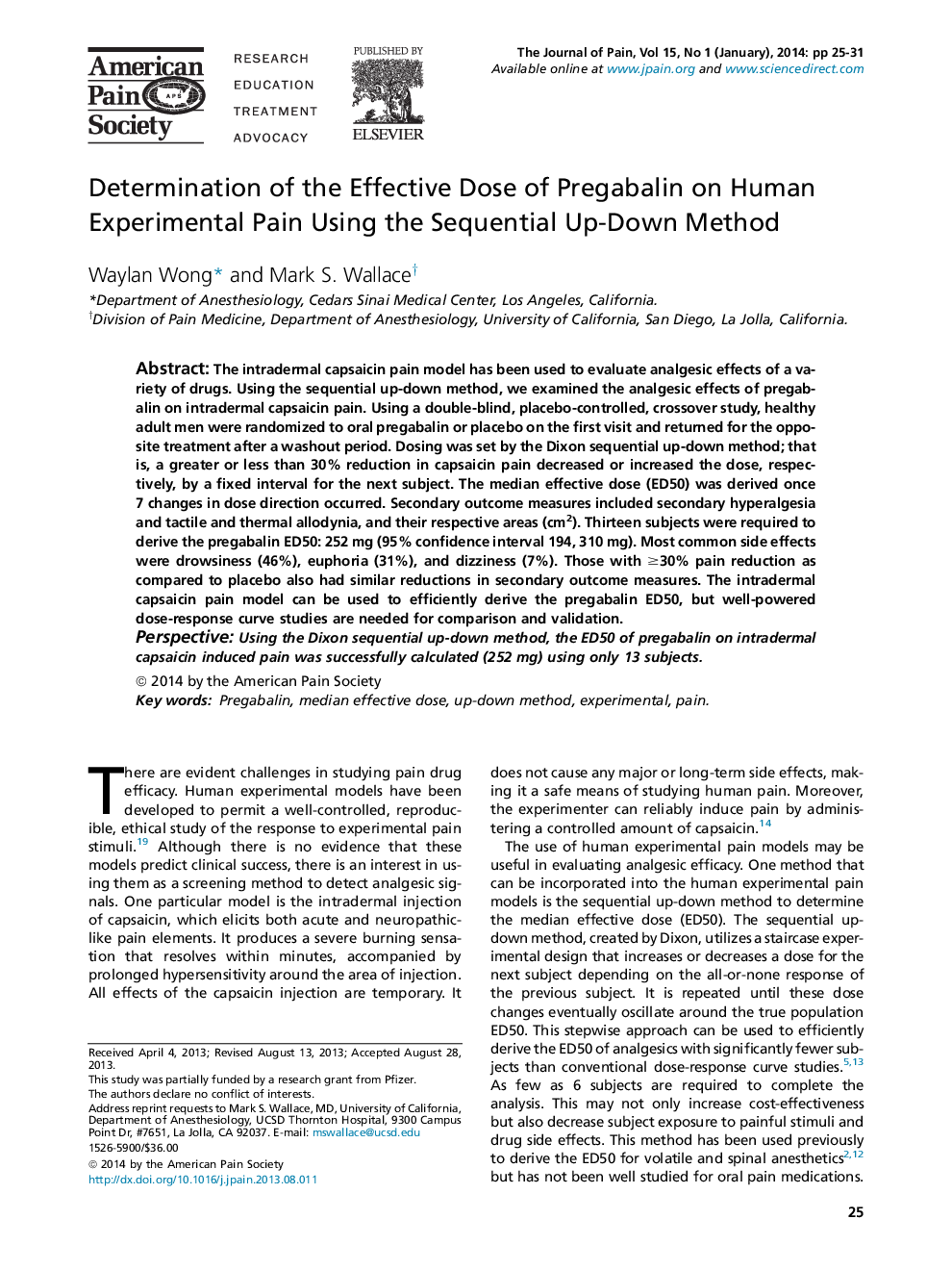| کد مقاله | کد نشریه | سال انتشار | مقاله انگلیسی | نسخه تمام متن |
|---|---|---|---|---|
| 2728872 | 1566751 | 2014 | 7 صفحه PDF | دانلود رایگان |
The intradermal capsaicin pain model has been used to evaluate analgesic effects of a variety of drugs. Using the sequential up-down method, we examined the analgesic effects of pregabalin on intradermal capsaicin pain. Using a double-blind, placebo-controlled, crossover study, healthy adult men were randomized to oral pregabalin or placebo on the first visit and returned for the opposite treatment after a washout period. Dosing was set by the Dixon sequential up-down method; that is, a greater or less than 30% reduction in capsaicin pain decreased or increased the dose, respectively, by a fixed interval for the next subject. The median effective dose (ED50) was derived once 7 changes in dose direction occurred. Secondary outcome measures included secondary hyperalgesia and tactile and thermal allodynia, and their respective areas (cm2). Thirteen subjects were required to derive the pregabalin ED50: 252 mg (95% confidence interval 194, 310 mg). Most common side effects were drowsiness (46%), euphoria (31%), and dizziness (7%). Those with ≥30% pain reduction as compared to placebo also had similar reductions in secondary outcome measures. The intradermal capsaicin pain model can be used to efficiently derive the pregabalin ED50, but well-powered dose-response curve studies are needed for comparison and validation.PerspectiveUsing the Dixon sequential up-down method, the ED50 of pregabalin on intradermal capsaicin induced pain was successfully calculated (252 mg) using only 13 subjects.
Journal: The Journal of Pain - Volume 15, Issue 1, January 2014, Pages 25–31
